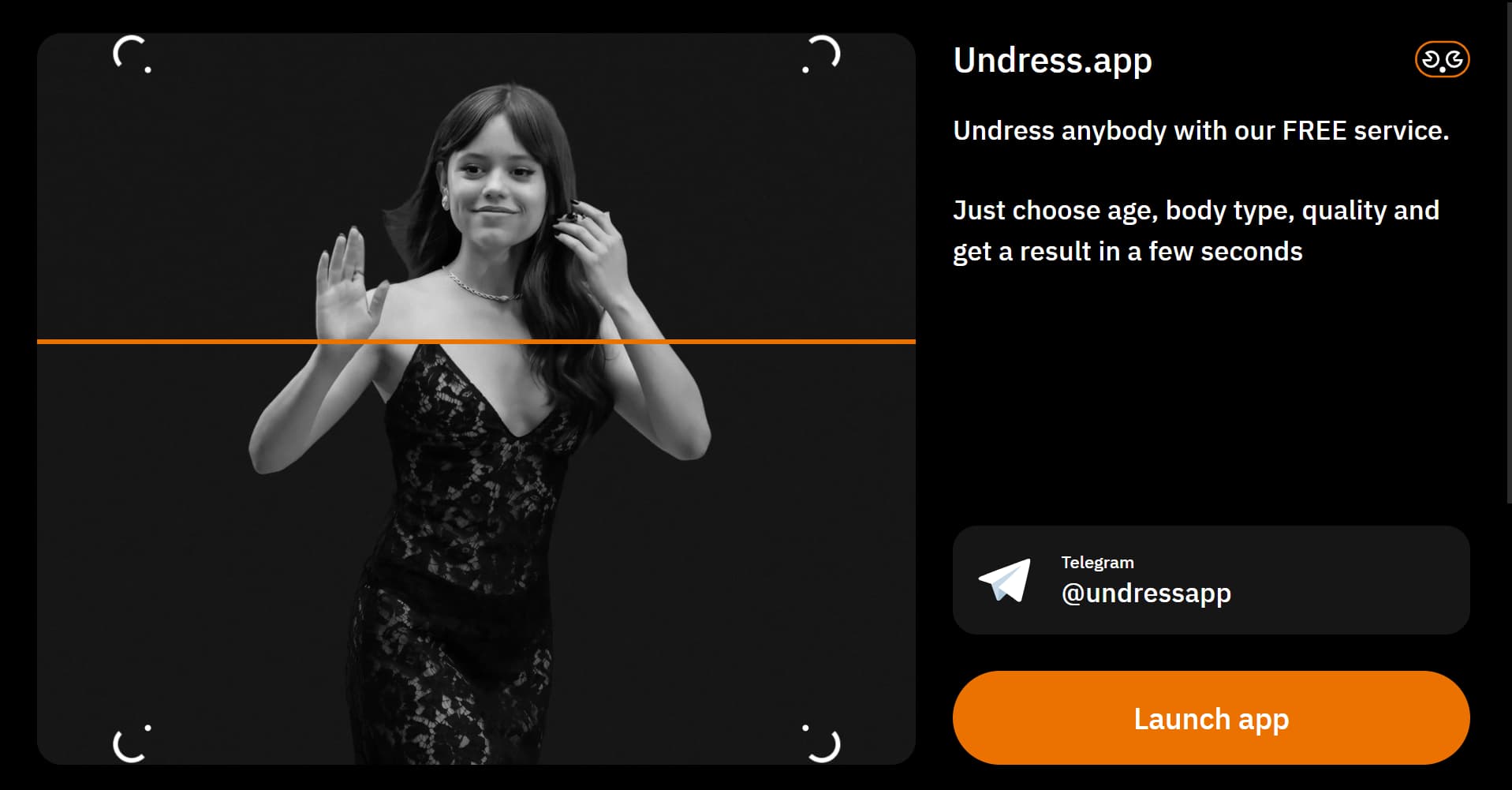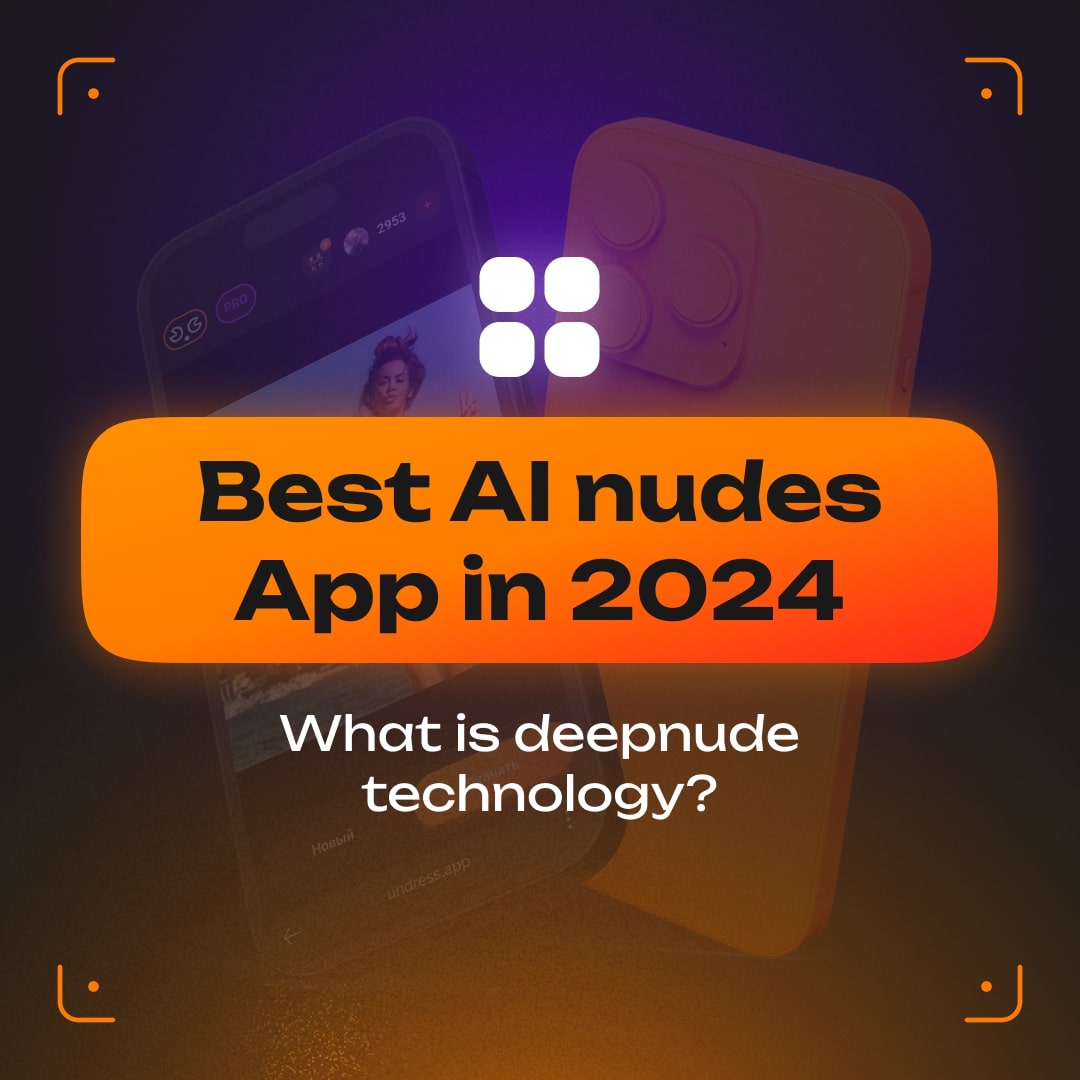The Dark Side Of "Free Undress Photos": AI's Ethical Minefield
In an increasingly digital world, the allure of powerful, easy-to-use tools is undeniable. Among these, the emergence of "AI clothes remover online free" applications has sparked significant debate and concern. These tools, which claim to allow users to "undress photos for free" or effortlessly remove clothing from images, represent a frontier in artificial intelligence with profound ethical, legal, and societal implications. While the promise of "no photo editing skills required!" and instant results sounds appealing, the reality behind these capabilities is far more complex and often fraught with danger.
This article delves into the phenomenon of AI-powered image manipulation tools that purport to "undress any photo." We will explore how these technologies function, the deceptive simplicity of their interfaces, and, most critically, the severe ethical and legal ramifications associated with their misuse. Understanding these tools is not about endorsing their use for illicit purposes, but rather about shedding light on a growing digital threat and emphasizing the paramount importance of consent, privacy, and responsible online behavior.
Table of Contents
- The Rise of AI-Powered Image Manipulation
- How Do These "AI Clothes Remover" Tools Claim to Work?
- The Allure of "Free" and "Easy": A Dangerous Proposition
- Navigating the Ethical Labyrinth: Consent and Privacy
- Legal Ramifications: Is "Undressing Photos" Illegal?
- The Broader Societal Impact of AI Image Manipulation
- Protecting Yourself in the Digital Age
- The Future of AI and Digital Ethics
The Rise of AI-Powered Image Manipulation
The digital landscape has been irrevocably altered by advancements in artificial intelligence, particularly in the realm of generative adversarial networks (GANs) and deep learning. These sophisticated algorithms have enabled the creation of incredibly realistic synthetic media, often referred to as "deepfakes." What began as a fascinating technological curiosity, capable of swapping faces in videos or generating non-existent people, has rapidly evolved to include tools that claim to "undress photos for free."
- Skirby With Dog
- Kayleigh Mcenany Children
- Are The Chainsmokers Brothers
- Taliya Gustavo Leaks
- Diplomat Ronnie
The core technology behind these "AI clothes remover" tools leverages vast datasets of images to learn patterns and textures. When an image is uploaded, the AI analyzes the subject's body shape, clothing, and surrounding context. It then attempts to generate what the body might look like without clothes, filling in the "removed" areas with algorithmically predicted skin and anatomy. The alarming aspect for many users is the promise of simplicity: "No photo editing skills required!" This accessibility lowers the barrier to entry for individuals who might otherwise lack the technical expertise to manipulate images, making the potential for misuse even greater.
How Do These "AI Clothes Remover" Tools Claim to Work?
The operational premise of tools that claim to "undress any photo" is remarkably straightforward from a user's perspective. The common workflow often involves a simple interface: "Simply upload your image or photo and use the brush tool to select which parts to remove and the AI will accurately remove the clothes." The user is presented with a seemingly effortless way to "transform a photo, unveiling a realistic depiction of a person without" their attire.
Various platforms and applications have emerged, each touting similar capabilities. For instance, the "Data Kalimat" mentions "Unclothy," an "AI tool designed to undress photos" that "by leveraging advanced AI models, users can upload images, and the tool will automatically detect and remove clothing, generating deepnude images." Similarly, "Introducing deepnude cc, also known as dngg ai, a revolutionary technology that leverages advanced artificial intelligence algorithms to digitally remove clothing from images." Other names that surface include "pincel ai," "anieraser," "clothoff.io," and even specialized services like "pixelmaniya" and "clothoffbot," a "deepnude telegram ai bot engineered for undressing photos with ai." There are also apps like "fix the photo body editor&tune" that claim to offer such functionalities. These tools promise "fast processing times" and the ability to "effortlessly eliminate unwanted clothing elements," giving users "more control over your photos." The underlying claim is always the same: to "easily remove or swap clothes from any photo using our online tool."
The technology behind these tools often involves complex algorithms that learn from vast datasets of images, including both clothed and unclothed figures. When an image is processed, the AI attempts to "fill in" the areas where clothing is present, generating what it predicts the underlying body would look like. This process is essentially a form of sophisticated image synthesis, creating an illusion rather than revealing what is actually underneath. The output is a synthetic image, a fabrication, not a true representation.
The Allure of "Free" and "Easy": A Dangerous Proposition
One of the most potent appeals of these controversial tools is the promise of accessibility and cost-effectiveness. Phrases like "AI clothes remover online free" and "Free undress AI tools to remove clothes with AI" are pervasive. The "Data Kalimat" explicitly states, "Free AI clothes remover websites are becoming increasingly popular, as they allow users to easily and quickly remove clothes from photos online." The notion that one can "undress photos for free" without any specialized software or expertise ("no downloads or editing skills needed") creates a powerful, yet deceptive, draw.
This apparent freeness, however, masks a multitude of hidden costs—costs that are not monetary but ethical, legal, and deeply personal. While the direct financial transaction might be zero, the price paid in terms of privacy violations, emotional distress, and potential legal repercussions is astronomically high. The "fast, simple, and online" nature of these tools makes them dangerously convenient for those with malicious intent, enabling the rapid creation and dissemination of non-consensual intimate imagery. The perceived ease of use—"with just a few clicks"—further normalizes a process that should be viewed with extreme caution and, in most cases, outright condemnation. This ease fosters a false sense of impunity, leading individuals to believe they can engage in such activities without consequence, a belief that is often shattered by the harsh realities of legal enforcement and victim suffering.
Navigating the Ethical Labyrinth: Consent and Privacy
At the heart of the controversy surrounding tools that "undress photos for free" lies a fundamental ethical dilemma: the absence of consent and the profound violation of privacy. These tools enable the creation of intimate images of individuals without their knowledge or permission, blurring the lines between reality and fabrication in a deeply disturbing way.
The Fundamental Violation of Non-Consensual Imagery
The creation of "undress photos for free" using AI tools, especially when applied to individuals without their explicit consent, constitutes a severe breach of personal autonomy and dignity. It transforms a person's image into a tool for someone else's gratification or malicious intent, stripping them of control over their own representation. This is not merely an act of digital manipulation; it is a profound invasion of privacy that can have devastating real-world consequences. The images produced are often used for revenge porn, harassment, blackmail, or simply for voyeuristic purposes, all of which are deeply unethical and harmful. The fact that "undress ai tool is a free deepnude app that can seamlessly undress characters in images" does not make its use ethical or permissible when consent is absent.
The Psychological and Emotional Toll on Victims
The victims of non-consensual "undress photos" face an unimaginable psychological and emotional ordeal. The discovery that one's image has been digitally altered to appear unclothed and then potentially shared online can lead to severe trauma, including anxiety, depression, paranoia, and even suicidal ideation. Victims often experience a profound sense of violation, loss of control, and public humiliation. Their reputation, relationships, and professional lives can be irrevocably damaged. The digital nature of these images means they can persist online indefinitely, leading to a perpetual fear of rediscovery and re-traumatization. This long-term suffering far outweighs any fleeting curiosity or malicious intent of those who seek to "undress photos for free."
Legal Ramifications: Is "Undressing Photos" Illegal?
The question of legality surrounding the use of AI to "undress photos for free" is unequivocal in many parts of the world: creating, possessing, or distributing non-consensual intimate imagery, including deepfake pornography, is illegal and carries severe penalties. While the technology itself might be a neutral tool, its application to generate "undress photos" without consent falls squarely into the realm of image-based sexual abuse.
Jurisdictions globally are increasingly enacting or updating laws to specifically address deepfake pornography and non-consensual intimate imagery. These laws often classify such acts as criminal offenses, punishable by significant fines, lengthy prison sentences, or both. For instance, in many countries, laws against revenge porn or the unauthorized dissemination of intimate images are being expanded to include digitally manipulated content. The very act of generating "undress photos" of someone without their consent, even if not immediately distributed, can be considered a form of harassment or privacy invasion, depending on local statutes.
Furthermore, platforms hosting or facilitating the creation of such content can also face legal scrutiny and liability. While some tools might claim to offer a "free" service, the legal repercussions for users can be anything but. Individuals caught creating or sharing these images could face criminal charges, civil lawsuits from victims, and a permanent criminal record, severely impacting their future prospects. The perceived anonymity of the internet or the "discreet" nature of some tools (like "clothoffbot" being a "deepnude telegram ai bot") offers no true protection against legal consequences once a crime has been committed. Ignorance of the law is rarely a valid defense when dealing with such serious offenses.
The Broader Societal Impact of AI Image Manipulation
Beyond the immediate harm to individual victims, the proliferation of tools that "undress photos for free" and other forms of AI-powered image manipulation poses a significant threat to the fabric of society itself. The ability to effortlessly create hyper-realistic fake images erodes public trust in visual media, making it increasingly difficult to discern what is real from what is fabricated.
This erosion of trust has far-reaching implications. It can be exploited for misinformation campaigns, political destabilization, and the spread of malicious propaganda. If people can no longer believe what they see, the foundation of informed public discourse is undermined. Moreover, the existence of such tools creates a chilling effect, where individuals, particularly women and public figures, live in constant fear that their images might be manipulated and used against them. This fear can lead to self-censorship and a reluctance to engage online, thereby stifling free expression and participation in digital spaces.
The "slippery slope" argument is highly relevant here. What starts as a seemingly innocuous "photo editor for removing clothes on photos" can quickly devolve into a pervasive threat, normalizing the violation of privacy and consent. The ease with which "undress photos for free" can be generated also contributes to the objectification and dehumanization of individuals, particularly women, reinforcing harmful stereotypes and attitudes. Society faces the challenge of adapting legal frameworks and ethical guidelines to keep pace with rapidly advancing technology, ensuring that innovation serves humanity rather than undermining its fundamental values.
Protecting Yourself in the Digital Age
In an era where AI tools can "undress photos for free" and manipulate images with unsettling realism, personal vigilance and proactive measures are more crucial than ever. Protecting oneself involves a combination of digital literacy, awareness, and knowing how to respond if one becomes a victim.
Digital Footprint Awareness
The first line of defense against non-consensual image manipulation is to be acutely aware of your digital footprint. Every photo shared online, whether on social media, messaging apps, or personal websites, becomes potential source material for these AI tools. Consider the privacy settings on all your online accounts and limit who can view and download your images. Be cautious about sharing high-resolution photos, especially those that clearly show your face and body. While it's impossible to completely eliminate the risk, minimizing your exposure can significantly reduce the likelihood of your images being targeted by those seeking to "undress photos for free." Educate yourself and others about the risks associated with public image sharing.
Reporting and Support for Victims
If you or someone you know becomes a victim of non-consensual "undress photos" or deepfake pornography, it is vital to know that support is available and action can be taken. Do not suffer in silence.
Steps to consider:
- Document Everything: Save screenshots, URLs, and any other evidence of the manipulated images and their dissemination.
- Report to Platforms: Contact the platforms where the images are hosted (social media, websites, messaging apps) and request their removal. Most platforms have policies against non-consensual intimate imagery.
- Contact Law Enforcement: Report the incident to your local police or relevant cybercrime unit. Provide them with all the documented evidence. Laws are increasingly in place to prosecute such crimes.
- Seek Legal Counsel: Consult with an attorney who specializes in cybercrime or privacy law to understand your legal options, which may include civil lawsuits.
- Seek Emotional Support: The emotional toll can be immense. Reach out to trusted friends, family, or mental health professionals. Organizations specializing in victim support for image-based sexual abuse can also provide invaluable resources and guidance.
The Future of AI and Digital Ethics
The existence of tools that claim to "undress photos for free" highlights a critical juncture in the development and regulation of artificial intelligence. As AI capabilities continue to advance at an unprecedented pace, the gap between technological innovation and ethical governance widens. The challenge lies in fostering beneficial AI applications while simultaneously mitigating the risks of misuse.
Moving forward, a multi-faceted approach is essential. This includes:
- Responsible AI Development: Encouraging developers to build AI systems with ethical considerations and safety measures embedded from the outset, actively preventing their use for harmful purposes.
- Stronger Legal Frameworks: Governments worldwide must continue to strengthen and harmonize laws specifically targeting the creation and dissemination of non-consensual deepfake pornography and image-based sexual abuse.
- Platform Accountability: Holding online platforms accountable for content moderation and for swiftly removing harmful material, including "undress photos for free," when reported.
- Public Education and Digital Literacy: Empowering individuals with the knowledge and critical thinking skills to identify manipulated content, understand the risks of sharing personal images, and advocate for their digital rights.
- International Cooperation: Addressing the cross-border nature of online harm requires global collaboration among law enforcement agencies, tech companies, and policymakers.
Conclusion
The emergence of AI tools that promise to "undress photos for free" represents a stark reminder of the dual nature of technological progress. While AI holds immense potential for good, it also presents unprecedented opportunities for harm, particularly when it infringes upon fundamental rights like privacy and consent. The ease with which one can "easily remove clothes from photos online" using these tools is deceptive, masking profound ethical and legal consequences that can devastate individuals and erode societal trust.
It is imperative that we, as digital citizens, remain vigilant and informed. The notion of "undress photos for free" might sound intriguing to some, but the true cost—measured in emotional trauma, legal penalties, and the erosion of digital safety—is immeasurable. We must advocate for stronger regulations, support victims of image-based abuse, and cultivate a culture of digital responsibility where consent is paramount and the manipulation of intimate images without permission is unequivocally condemned. Let us collectively strive to ensure that AI serves humanity's best interests, rather than becoming a tool for its degradation.
- John Cena Death
- Roblox Condo Games
- %C3%B1%C3%BF%C3%B0%C3%B0 %C3%B1%C3%B0%C2%B5%C3%B0%C3%B1%C3%B0 %C3%B0%C2%BA%C3%B0%C2%B5%C3%B0%C3%B0
- Big Martha Grandchildren
- Sullivan Sweeten Now

Unleash Your Creativity: Undress AI App

Anderson Cooper's Take On Undress AI: A Candid Exploration

Undress App Blog